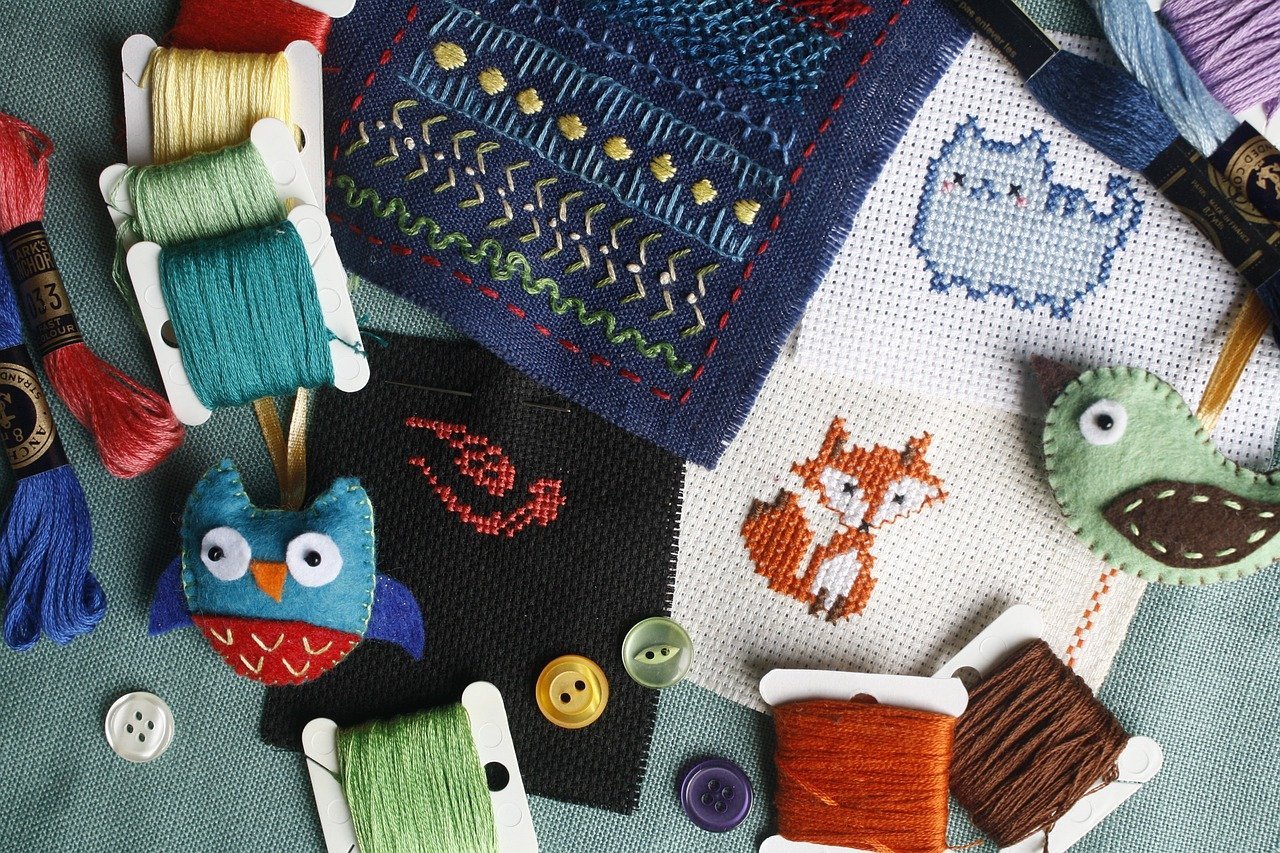It was necessary to record and compare different designs, stitches and effects before embroiderers and lace makers could use printed designs. To accomplish the task, the owner decided to create a sampler - a personal reference work that contained elements and patterns that he learned from others and applied in new work for embroidery fabrics. In stitch-point, the stitches are counted and worked with a needle over the threads, or mesh, of a canvas foundation. Either single- or double-mesh canvas of linen or cotton is used.
Historically, needlepoint designs were typically drawn by amateur embroiderers, sometimes from patterns published in Europe as early as the 16th century, or by professional embroiderers, most of whom belonged to royalty or a wealthy family until the 18th century. At the start of the 18th century, Europe had a large community of professional embroiderers. Up to that date, many of these embroiderers opened shops that sold embroidery supplies and needlepoint kits that included a designed canvas and embroidery material.
Decorative needlework was widely practiced in many cultures where stitch and pattern collections were compiled. Despite the rarity of early samples, the quality of the oldest preserved examples suggests novice as well as experienced artisans (learning needlework was an important part of a young woman's education in many cultures). Ancient Egyptian grave sites probably date to the 14th or 15th century, according to the earliest pieces we have in our collection.
Egyption & American History of Needlework
In tomb paintings, you can see Egyptian embroidery on clothes and hangings. Romans held needlework in high regard, calling it "painting with thread." Despite the changes in needles and stitches over the centuries, the basic stitches of needlework haven't changed much. Warm, simple clothing was made out of animal skins using bone, wood, and ivory. Plastic and steel are the most common materials used today to make needles. American colonial times saw a great deal of needlework. It was common for girls to create cross-stitched samplers as part of their education. In addition to flowers, buildings, and animal motifs, samplers are used to practice stitches and to learn how to read and write. In addition to teaching a child basic embroidery skills, marking samplers also taught the alphabet and numbers. As any homemaker knows, keeping track of the linens in her home is one of her most valuable possessions. Thus, learning to embroider a marking sampler was very useful. Her initials and a number were often stitched on them as a mark of ownership. A small number of young girls in the early 1900s made marking samplers either at home that their mothers or grandmothers taught them, or at small community schools run by widows or spinsters who were themselves married. Both boys and girls attended these early years of elementary school. Both genders participated in knitting, sewing, and sampler-making instruction, in addition to reading, arithmetic, and other subjects.
Needlework in 16th Century
It is extremely rare to find surviving examples of 16th-century samplers. An example of the collection's highlights is a German piece, mostly in the style of earlier pattern books (between 1524 and 1540), that was likely intended for decorative purposes.
Needlework in 17th century
Samplers in England developed from reference materials for embroiderers in the 17th century to learning tools for girls interested in needlework. A 'band sampler' was an ordered arrangement of rows of borders, whereas a 'spot sampler' was a randomly placed arrangement of themes. Women were expected to become skilled at needlework in order to manage their household and to adorn themselves and their family. Girls were able to use alphabets to To practice marking linen like sheets, undergarments, and personal items, and to decorate clothing and household furnishings with motif patterns.
Needlework in 18th century
English samplers evolved into a square shape in the early 18th century and combined different needlework skills. Consequently, the finished product could be displayed as a painting or print. Decorative borders, pictorial designs, moral or religious verse, as well as repeating patterns and alphabets, were common on samplers. It was no longer unusual for houses and gardens to be depicted with added local touches such as windmills or dovecotes by the mid-18th century.
Samplers became increasingly popular in the late 19th century as models of professionally made work for amateurs to follow. By this time, the samplers were mostly cross stitched schoolroom exercises. Historic samplers have been providing instruction and inspiration for contemporary embroiderers for a number of decades now.



Leave a comment
This site is protected by hCaptcha and the hCaptcha Privacy Policy and Terms of Service apply.